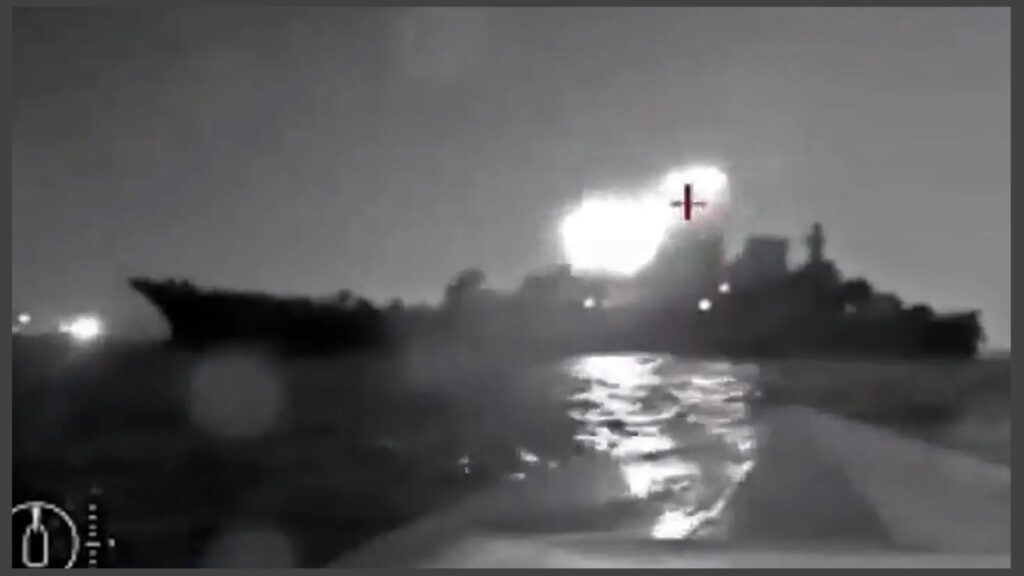Unleashing the Future: How Unmanned Surface Vessels are Shaping Modern Naval Warfare!

The Growing Significance of Unmanned Surface Vessels in Modern Naval Conflicts.
The utilization of unmanned surface vessels (USVs) in contemporary naval conflicts has seen a notable rise in importance. The UK Defense Ministry underscores this trend, emphasizing that USVs are progressively becoming a pivotal element in modern naval warfare, capable of effectively targeting vulnerable points within Russia’s maritime supply routes.
A significant incident occurred on August 4 when a suicide naval drone incapacitated the Russian Merchant Tanker Sig. Similarly, an attempted attack on Russian patrol boats, presumably accompanying the MV Sparta IV, was thwarted on August 2.
Revealing details, the UK Defense Ministry noted that despite flying under civilian flags, both the MT Sig and MV Sparta IV have consistently been involved in transporting fuel and military resources between Russia and Syria. This reliance on civilian vessels has gained prominence due to limitations placed on Russian military ships’ movement through the Bosphorus since February 28, 2022.
The reliance on vessels like Sig and Sparta IV has grown significantly owing to these restrictions on the movement of Russian military ships through the Bosphorus, which has compelled an increased dependence on such vessels to sustain Russian military operations in Syria and the broader Mediterranean region.
An impactful incident occurred on August 3, involving Ukrainian forces targeting the Ropucha-class landing ship Olenegorsky Gornyak with a drone attack. The ship, frequently repurposed for the transport of both military and civilian cargo between Russia and the Crimean peninsula, sustained substantial damage. The attack took place in proximity to the Novorossiysk base of the Black Sea Fleet, which serves as a relocation site for vessels following prior attacks on the Sevastopol naval base.
These incidents collectively underscore the escalating importance of uncrewed surface vessel (USV) operations within the context of modern naval warfare. This trend signifies a transition towards the integration of advanced autonomous technologies into maritime operations.

A Transformative Strategy
Throughout the ongoing conflict, Ukraine has adopted a strategy aimed at incapacitating Russian vessels using ‘kamikaze’ USVs equipped with explosive payloads. These USVs are guided over substantial distances and deliberately directed at their intended targets, leading to impactful detonations upon impact.
Remote operation of these USVs is believed to be facilitated through satellite links, which have been enhanced to extend operational range. While multiple instances of these attacks have been documented, the precise outcomes have often been a subject of dispute and challenging to substantiate.
On October 29, 2022, when Ukraine deployed naval drones to attack Russian warships within the port of Sevastopol that time a significent event involved SUV’s took place, the base for Russia’s Black Sea Fleet. Although the attack didn’t result in the sinking of vessels, it had significant implications. Moscow bolstered defensive capabilities in Crimean ports and refrained from moving warships beyond the protection offered by port defenses.
In addition to this defensive impact, these USVs have also provided Ukraine with an effective means to limit the maneuverability of the Russian Navy. Mykhailo Podolyak, an adviser to the Ukrainian president, commended these actions, asserting that they reshape maritime dynamics and restore international jurisdiction over the waters.
Addressing the Challenges
Dr. James Bosbotinis, a defense and international affairs analyst based in the UK, delved into the complexities of detecting USVs and potential countermeasures. He highlighted the challenges due to their diminutive size, minimal signature, and unique mode of operation.
He advocated for a multifaceted defense strategy encompassing detection, tracking, and targeting of USVs from a distance. This could involve armed helicopters or UAVs equipped with kinetic and non-kinetic systems, alongside passive defenses such as floating booms.
Advancements by Ukraine
Meanwhile, the Ukrainian military is actively advancing a fleet of 100 naval drones to safeguard their waters. These drones are designed to serve various purposes, including intercepting Russian ships carrying missiles, safeguarding merchant vessels, executing covert missions, and enhancing maritime reconnaissance.
These drones possess an impressive operational range of 800 kilometers, attain speeds of up to 80 kilometers per hour, and can operate for up to 60 hours. With dimensions of 5.5 meters and a payload capacity of 200 kilograms, they offer versatility in maritime operations, including reconnaissance, escort duties, targeting artillery fire, and countering amphibious maneuvers.
By: M Z Hossain, Editor Sky Buzz Feed















